Applications
Low-voltage DC input LED flood lights are directional lighting luminaires that operate on direct current (DC) power at a forward directional voltage, such as 12 VDC, 24 VDC, or 48 VDC. These products are designed to be connected to a DC power source provided by solar photovoltaic systems, marine vessels, mobile diesel generators, vehicles, and other types of DC power systems. Low voltage DC systems have been staging a quiet comeback thanks to their ability to directly connect with renewable power sources and the use of DC power in the vast majority of electronics and equipment operated by stand-alone power systems. With the widespread adoption of LED technology, DC powered lighting is gaining momentum. Floodlighting is a basic element of outdoor lighting. It provides a controlled beam of light that is needed for area or task illumination in an extensive range of outdoor applications. Among the applications are those where utility power is unavailable, and the luminaires need to operate on low-voltage DC power generated by a battery system or power generator.
Benefits of operating LEDs on DC power
Conventionally, floodlighting had been delivered by high-intensity discharge (HID) sources such as metal halide or high pressure sodium (HPS) lamps. To operate these alternating current (AC) powered light sources on a solar powered lighting system or a low-voltage DC grid, an inverter is required to transform the DC power into a utility frequency alternating current that can be fed into the HID lamps. The use of a DC-to-AC power converter incurs power losses, which adds to the inefficiency of HID flood lights.
LEDs, on the other hand, operate naturally on direct current. These low-voltage semiconductor devices require a constant source of direct current during operation. Operating LEDs on alternating current will cause them to flicker at a repetition rate of twice the AC sinusoidal frequency. This is because LEDs emit light when current flows in the forward direction of the LED p-n junction (from positive to negative) whereas the voltage and current in an AC load alternates sinusoidally between a positive and a negative value. LED lighting therefore has clear advantages related to the integration with DC power systems. It eliminates the need for an inverter to convert electricity produced by the system from DC into AC energy.
Reduced driver cost
DC powered LED flood lights are similar to AC powered LED flood lights in construction, with the exception of the electrical system. A significant part of effort in designing an AC powered LED luminaire is devoted to line and load regulation. In order to produce a stable and controllable amount of light, the LED driver must convert AC line power to a voltage and current compatible with the LED packages. Accompanying AC-to-DC power conversion are the challenges of power factor correction, input power conditioning, output filtering, current regulation, electromagnetic interference (EMI) filtering, etc. The LED driver not only needs to convert the negative half of the voltage waveform to positive, but also must incorporate multiple electrical circuits to provide regulated output power to the LED load.
The AC-to-DC power conversion efficiency is in trade-off with the complexity of circuit design which is intended to produce a DC output with electrical characteristics matched to those of the LEDs. A further concern is that the necessity of using components that are not as reliable as LEDs (inductors, electrolytic capacitors, etc.). Driver reliability is the weakest link among all components in an AC powered LED flood light. A failure in any of these circuits under the influence of power surges, poor incoming power quality, or internal electrical/thermal stresses can have a cascade effect on driver performance and reliability and may ultimately cause a catastrophic failure. Approximately 40% of the driver circuit is occupied by components that are needed for AC-to-DC conversion, which adds a significant volume and cost to the system.
Higher circuit efficiency and system reliability
Without the burden of regulating an AC input that often has a variety of voltage and current contaminations on the pure sinusoidal waveform, DC powered LED flood lights have the fundamental advantages of higher circuit efficiency, system reliability, and cost competitiveness when compared to the AC powered counterparts. This is due to the reduced complexity of the driver circuitry. Creating a regulated LED load from a DC power source can go from a very simple concept, using a passive polarization resistor, to a more sophisticated solution using active current regulator circuits.
Switching regulators
DC LED systems typically employ active control methods to accurately regulate the power to the LEDs. The LED driver form a DC powered system is configured either as switching regulator or a linear regulator. Switching regulators are the most implemented type of drive current regulation solution for commercial DC LED lights. A switching regulator uses a semiconductor switch, which is usually a metal oxide semiconductor field effect transistor (MOSFET), to provide regulation by varying the duty cycle of the saturated power switch. The popularity of switching regulation arises from its high circuit efficiency and ability to handle wide input voltage ranges. However, switching regulators by their switching nature generates EMI that has to be suppressed by careful circuit board design. The use of additional circuits for EMI filtering can double the overall cost of the LED driver.
Linear regulators
A linear regulator utilizes a power transistor (pass element) which operates in the linear region to drop the input voltage down to the desired output voltage. Linear regulation is a simple, low cost solution but can be effective in applications where there’s no need to boost the voltage and there’re small differences between the input supply voltage and output load voltage. The complete absence of any EMI radiation is another advantage that allows linear regulators to be used in applications where a switching circuit cannot meet demanding EMI specifications. The advantages of linear regulators, however, are outweighed by their low efficiency, heat dissipation, and limited dimming capabilities.
Compared with switching regulators that can operate with an efficiency reaching 95%, linear regulators have an efficiency in a typical percentage in the low 80s. The difference between the input voltage and regulated output voltage (dropout voltage) is continually dissipated as heat, which introduces additional thermal stresses to the system. Switching power supplies support both pulse-width modulation (PWM) and constant-current reduction (CCR) method for dimming control, whereas the only option to enable full range dimming with linear regulators is to use the more expensive PWM method.
System integration
DC powered LED flood lights are offered in a variety of wattage and beam options as well as performance variants that arise with component selection and luminaire design. System development of LED flood lights revolves around meeting the desired photometric and efficacy specifications while simultaneously achieving lifespan and cost targets. The efficacy and lifespan of an LED flood light is the cumulative contribution of its LEDs, heat sink, driver, optics, and mechanical system.
Light source
Various types of LED packages find their use in floodlighting applications. LED packages can be classified by technology platform into high power packages, mid-power packages, chip-on-board (COB) packages, and chip scale packages (CSPs). The use of a particular package platform leads to trade-offs between different attributes. Mid-power LEDs, due to their plastic construction, can often exhibit more rapid lumen degradation than high-power, CSP or COB LEDs. Yet they have a decent a market share mainly because of their high initial efficacy. High power LEDs are a proven light source that can survive operation at high drive currents and junction temperatures. These LEDs are currently the choice of source for high power systems or applications where system reliability is a priority. Regardless of the technology platform, the phosphor down-converter is always the key component of a high performance white LED because it determines the color characteristics (color rendering and color temperature) of phosphor converted LEDs and its thermal stability is critical to the package efficiency and color stability.
Optical design
While the directional nature of LEDs reduces the need for secondary optics, there’re a considerable range of applications that require secondary optics to achieve efficient delivery of light with the optimum optical distribution and glare control. Most LED flood lights are direct lighting systems that use reflectors or lenses to improve or control light distribution. A popular practice in the optical design for LED flood lights is to regulate luminous flux from the light source with package-scale optics such as TIR lenses and reflector systems that provide optical control for individual LEDs.
Thermal management
The carefully selected LEDs must be properly integrated into the luminaire so that they will operate in a controlled environment. For the LEDs to perform to their full capacity, effective implementation of thermal management, drive current regulation and mechanical engineering is the key. The majority of LED failure mechanisms in DC LED systems are temperature-dependent. LEDs should be run at low temperatures in order to ensure that desired operating behavior will remain stable over the long term. Elevated junction temperatures from thermal buildup within the semiconductor package cause light output reduction and accelerated chip degradation. In general, the total wattage of the system or the applied power load will dictate the thermal design.
The thermal transfer path must be dimensioned to the required rate of heat flow. Each thermal resistance in the path from LED junction through the solder interconnects, printed circuit board, and heat sink to the ambient air should be minimized. The heat sink is the most influential part of the thermal path. The heat sink is typically fabricated from die cast or extruded aluminum for high efficiency thermal conduction and designed with a large surface area that facilitate convective heat transfer.
Handling environmental influences
Outdoor lights are exposed to a range of environmental factors that can compromise luminaire performance and longevity. It is a usual requirement to exercise tight control of environmental conditions, particularly ingress protection (IP), for LED flood lights. The light engine and driver/electrical compartment of an LED flood lights are sealed a minimum rating of IP65. The sealed enclosure is usually installed with a membrane breather that equalizes pressure differentials created during exposure to rapid, extreme or recurring changes in ambient conditions. The luminaire should be ruggedly constructed to resist shock and vibration. Chemical surface treatment and polyester powder coating lend the aluminum housing enduring corrosion resistance.

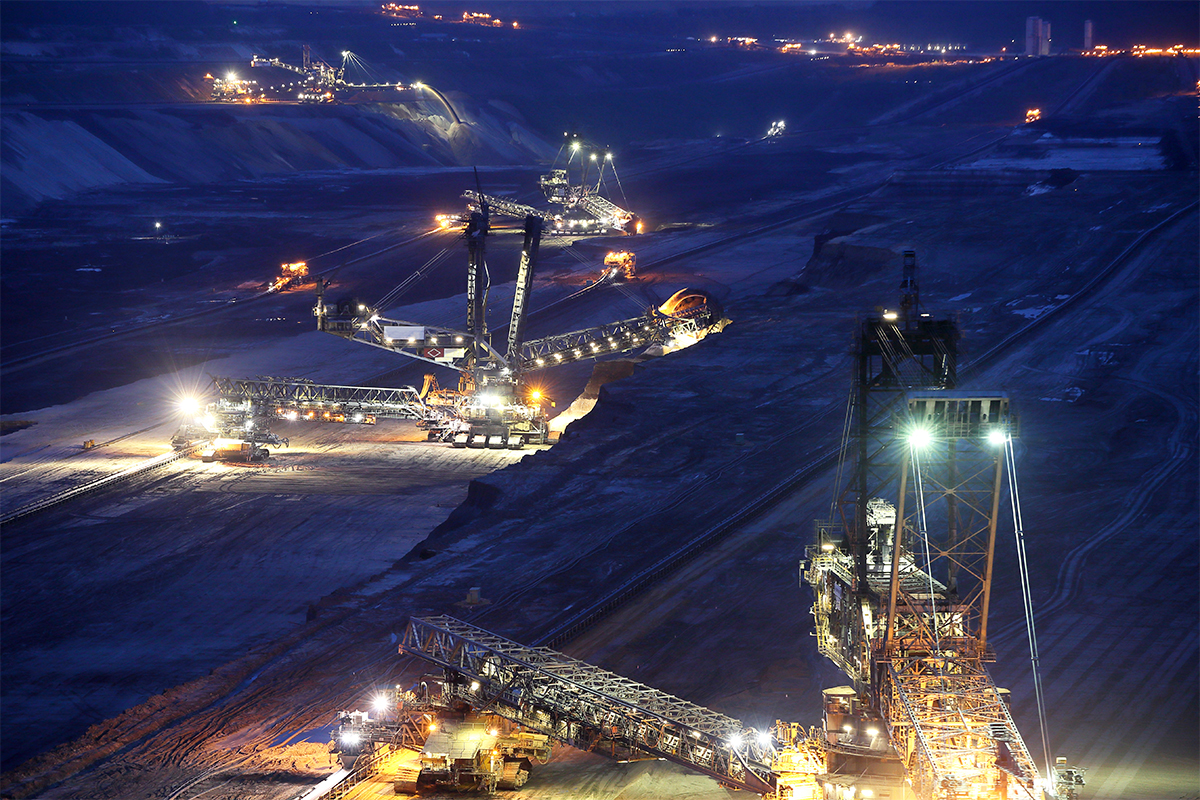


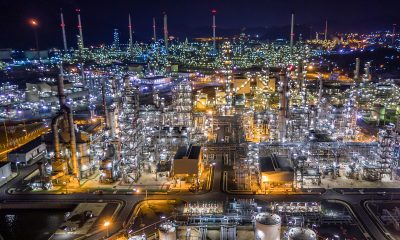


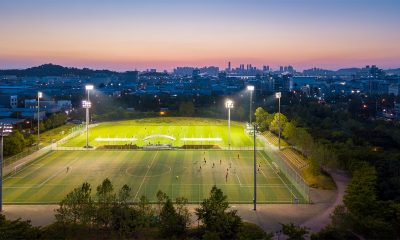
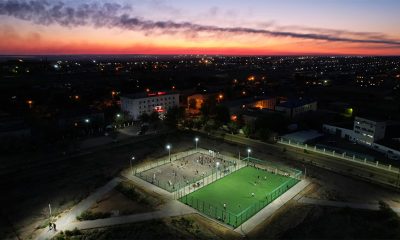
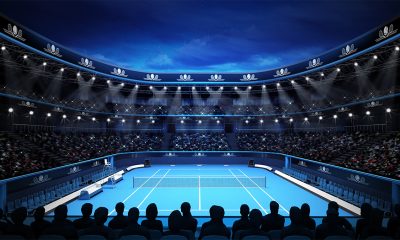
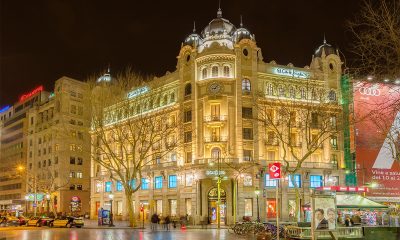
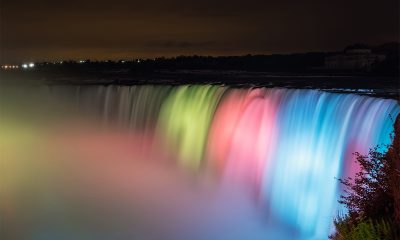

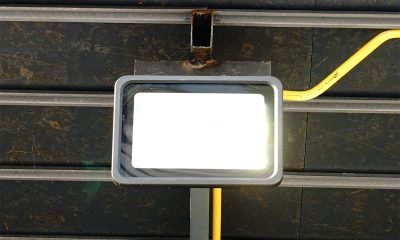





Loading...